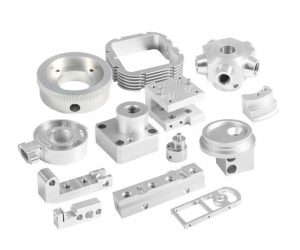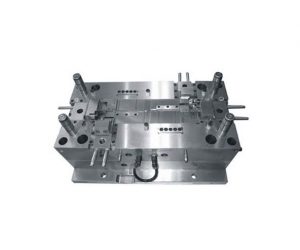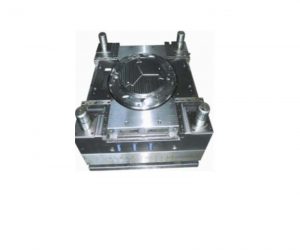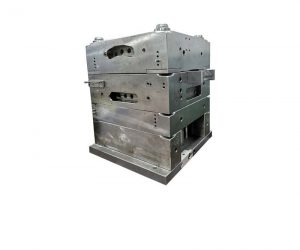Injection Molding Machines (IMMs) are critical in the manufacturing of plastic parts for various industries, including automotive, medical, packaging, consumer goods, and electronics. These machines work by injecting molten plastic material into a mold, which is then cooled and solidified into the desired shape. There are different types of IMM injection molding machines, each with its advantages and disadvantages. This guide will explore the various types of IMMs, their characteristics, and key factors to consider when choosing the right machine for your application.
What is an IMM Injection Molding Machine?
An IMM injection molding machine, also known as an injection press, is a device used to produce plastic parts by injecting molten material into a mold. The IMM consists of two main parts:
- Injection Unit: Melts the plastic material and injects it into the mold under high pressure.
- Clamping Unit: Holds the mold closed and applies the necessary force to maintain the mold’s shape until the plastic cools.
IMMs are used in a variety of industries to create parts that are complex, precise, and durable. They are capable of producing parts of various sizes and shapes, from small components to large, high-performance products.
Types of IMM Injection Molding Machines
IMMs can be classified based on the drive technology that powers their main axes. The three primary types are hydraulic, electric, and hybrid machines. Each type offers specific advantages depending on the application requirements.
1. Hydraulic IMM
The hydraulic IMM is the earliest and most commonly used type. It relies on a hydraulic system to power the injection and clamping processes.
- Advantages:
- High force and speed: Hydraulic systems can generate large clamping forces, making them ideal for producing large plastic parts.
- Suitable for large-scale production: Hydraulic machines are robust and capable of handling high-pressure injection molding tasks.
- Versatile: Can handle a wide range of materials and complex mold designs.
- Disadvantages:
- Energy inefficiency: Hydraulic machines consume more energy than electric or hybrid machines, leading to higher operating costs.
- Higher maintenance: The hydraulic system requires regular maintenance due to wear and tear on pumps, valves, and seals.
- Less precision: Compared to electric machines, hydraulic machines may have lower control over injection speed and position.
- Best for: Large parts, high-volume production, and applications requiring high clamping force.
2. Electric IMM
An electric IMM uses servo motors to power the injection, clamping, and plasticizing units. This machine type has gained popularity in recent years due to advancements in electric drive technology.
- Advantages:
- Energy efficiency: Electric motors are more energy-efficient than hydraulic systems, offering up to 70% energy savings. There are no hydraulic pumps, which eliminates energy loss from compressibility and viscosity.
- High precision and repeatability: Electric machines provide better control over speed, torque, and position, resulting in consistent, high-quality parts.
- Faster cycle times: Electric motors allow for faster response times, improving overall productivity.
- Lower maintenance: Since electric machines do not rely on hydraulic fluid, maintenance costs are lower, and there is less environmental impact.
- Disadvantages:
- Higher initial cost: Electric IMM machines typically have a higher upfront cost due to the advanced servo motors and electrical systems.
- Limited clamping force: Electric machines are generally not as powerful in terms of clamping force as hydraulic machines.
- Best for: Small to medium-sized parts, precise molding requirements, and environments with high energy efficiency priorities.
3. Hybrid IMM
A hybrid IMM combines the features of hydraulic and electric systems. Typically, a hybrid machine uses a hydraulic system for clamping and injection, with electric motors controlling other processes such as metering and plasticizing.
- Advantages:
- Cost-effective: Hybrid machines offer a lower initial cost compared to full-electric machines while providing some energy efficiency benefits.
- Flexible performance: The hybrid system allows for a balance of clamping force (from hydraulics) and precision control (from electric motors).
- Energy savings: While still using hydraulics, hybrid IMMs offer some energy-saving features by using electric motors to drive specific axes.
- Disadvantages:
- Less energy-efficient than full-electric machines: Although hybrid machines are more energy-efficient than fully hydraulic models, they are still not as energy-efficient as full-electric systems.
- Maintenance complexity: The combination of hydraulic and electric components may require more complex maintenance routines compared to purely hydraulic or electric machines.
- Best for: Applications that require a balance of high clamping force and precision, and where initial cost is a major concern.
4. Servo-Hydraulic IMM
A servo-hydraulic IMM uses hydraulic systems for the clamping and injection process but replaces the conventional hydraulic pump with a servo motor to control the hydraulic system’s speed and flow.
- Advantages:
- Energy efficiency: Servo-hydraulic systems can reduce energy consumption by adjusting the speed of the pump to match the demand, reducing waste.
- Precision: The servo motor allows for better control of injection speed and pressure.
- Lower noise: These machines tend to generate less noise compared to traditional hydraulic machines.
- Disadvantages:
- Higher initial cost: The inclusion of servo motors and advanced controls can increase the upfront cost of the machine.
- Not as energy-efficient as electric machines: While more energy-efficient than standard hydraulic systems, servo-hydraulic machines are not as energy-efficient as fully electric machines.
- Best for: Medium to large parts where energy efficiency and precision are needed but with a higher tolerance for some hydraulic components.
5. Standard Hydraulic IMM with Variable-Displacement Pump
This type of machine utilizes a variable-displacement pump that adjusts the oil flow to meet the hydraulic system’s needs, improving energy efficiency.
- Advantages:
- Energy savings: Compared to a standard hydraulic IMM with a fixed-displacement pump, this system saves energy by adjusting the pump flow to match the machine's demands.
- Reduced wear: The ability to reduce oil flow when not needed lowers the strain on the hydraulic system, increasing the lifespan of the machine components.
- Disadvantages:
- Moderate energy savings: While more efficient than traditional hydraulic machines, this type still uses hydraulics, making it less energy-efficient than electric or hybrid systems.
- Best for: Applications with moderate to high production volumes that require some energy efficiency improvements but do not need the highest levels of precision.
How to Choose the Best IMM for Your Application
Choosing the right IMM involves evaluating several factors related to your specific production needs. Here are some key considerations:
- Production Requirements:
- Type of Product: What type of plastic parts are you producing? Complex, high-precision parts may require an electric or hybrid IMM, while larger parts may benefit from hydraulic systems.
- Production Volume: High-volume production runs benefit from the efficiency and reliability of hydraulic or hybrid machines. For smaller production runs, an electric IMM may be more efficient.
- Tonnage and Clamping Force: Ensure the IMM can handle the required clamping force based on the size and complexity of your mold.
- Material Compatibility:
- Ensure the IMM is compatible with the types of plastics you will use (e.g., thermoplastics, thermosets, etc.).
- Injection Speed and Pressure:
- Machines with adjustable injection speed and pressure settings are crucial for achieving the desired part quality, especially for complex or high-precision molds.
- Energy Efficiency:
- If minimizing energy consumption is a priority, consider a full-electric or servo-hydraulic IMM for significant energy savings.
- Budget:
- While electric and hybrid machines tend to have higher upfront costs, they can lead to lower operating costs in the long run. Weigh the initial investment against potential savings.
- Control Systems and Precision:
- Machines with advanced control systems (such as full-electric or hybrid models) provide higher precision, enabling better quality control and fewer defects.
- Maintenance and Reliability:
- Consider the maintenance requirements of each type of IMM. Electric machines generally require less maintenance, while hydraulic machines may need more frequent attention to their hydraulic systems.
Conclusion
Choosing the right IMM injection molding machine depends on your specific production needs, including product type, volume, material requirements, and budget. Hydraulic machines are ideal for large parts and high-force applications, while electric machines offer high precision and energy efficiency. Hybrid and servo-hydraulic machines provide a balance of energy savings and flexibility. By carefully assessing these factors, you can select the IMM that will help you optimize productivity, reduce costs, and ensure high-quality production.
We hope this guide helps you understand the different types of IMM injection molding machines and provides valuable insights into choosing the right machine for your application.




